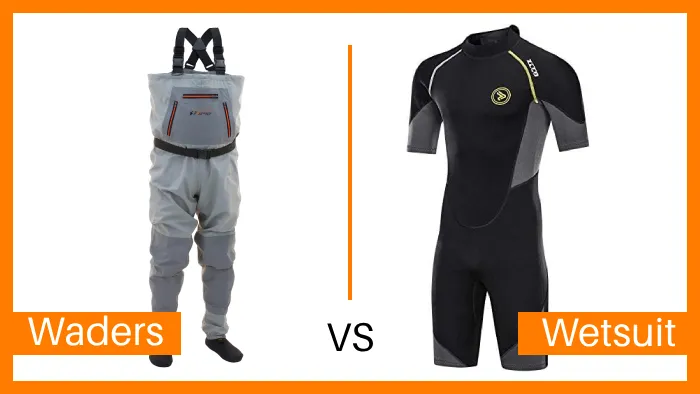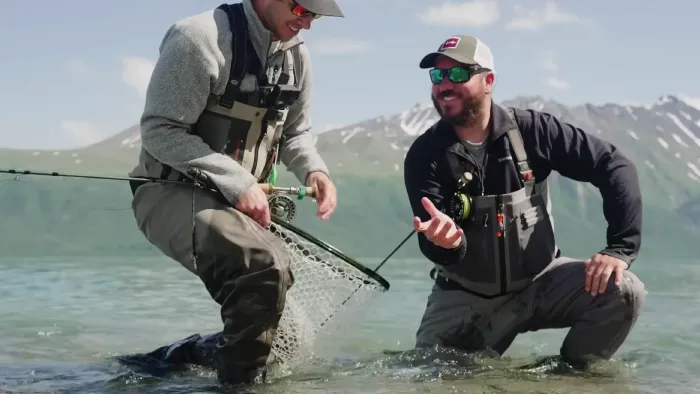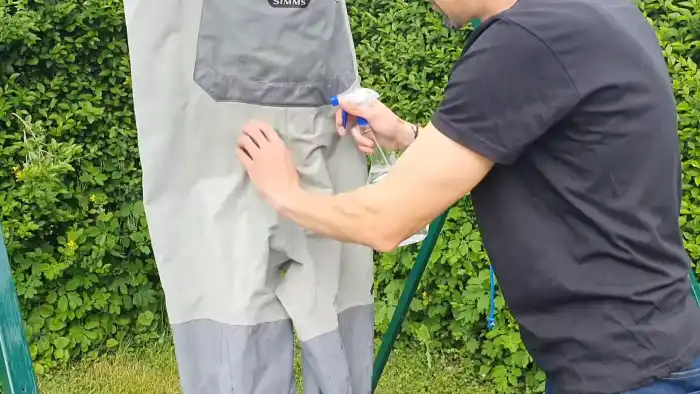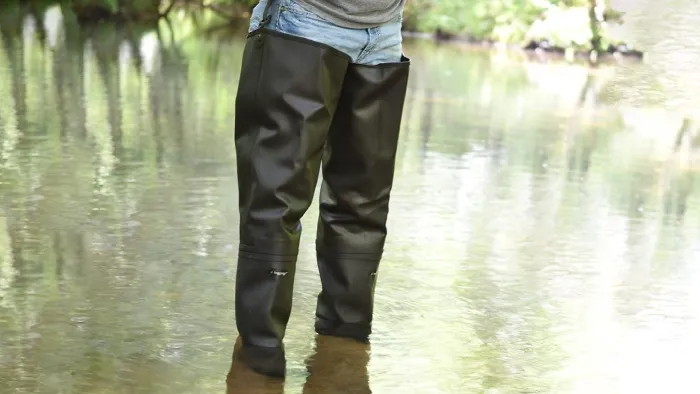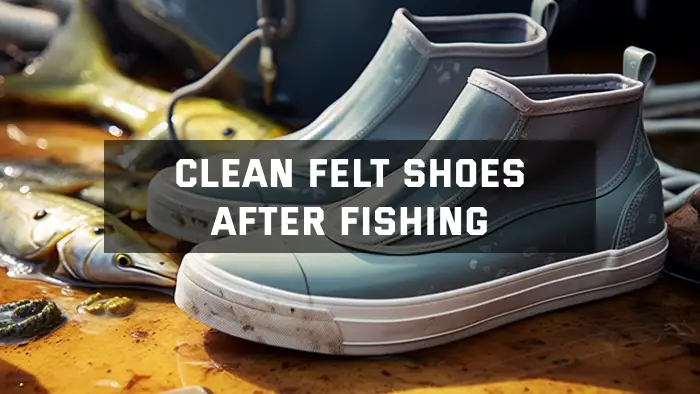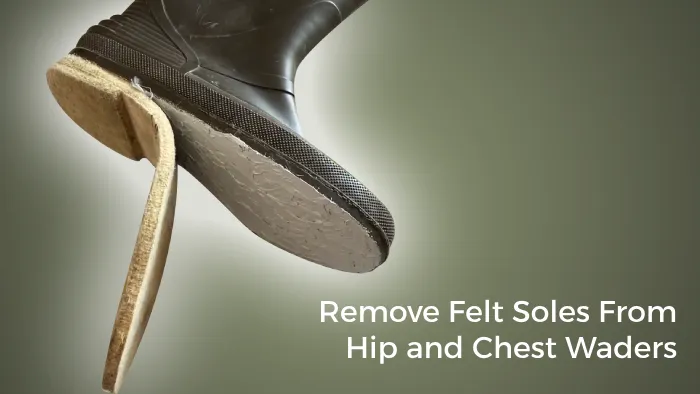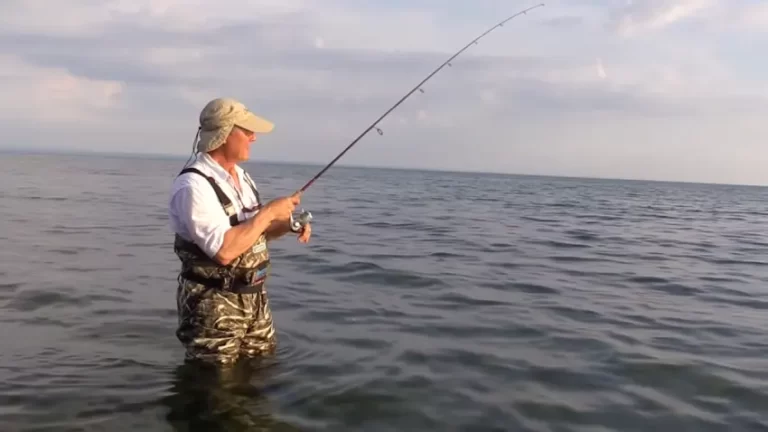Fishing Waders vs Wetsuit: 6 Differences [Uncoverd]
When you want to go fishing, waders and wetsuits are two of the most commonly used attires that can make your fishing experience a whole lot better. But, you need to know the differences between the waders and wetsuit to ensure you make the right choice for your angling adventures.
While both waders and wetsuits serve the purpose of keeping you dry and comfortable in aquatic environments, they have distinctive features that set them apart.
Fishing waders are primarily designed for use in waist-to-chest deep waters and rough conditions, providing comfort and ensuring you stay dry.
On the other hand, fishing wetsuits are more versatile, allowing for deeper water exploration and rock hopping, providing safety and comfort in dangerous fishing situations.
We will explore the dissimilarities between fishing waders and wetsuits. So, fasten your fishing vest and get ready to explore all the essential disparities between these two essential pieces of fishing gear.
Differences Between Waders vs Wetsuits
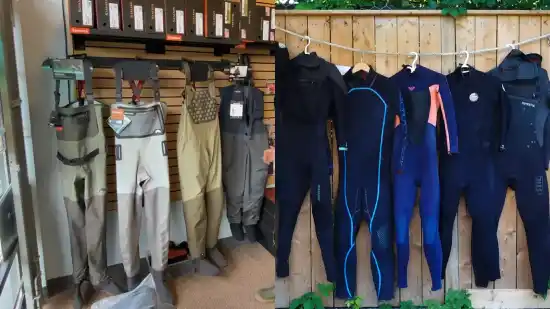
Wetsuits and fishing waders can be divided into the following categories:
- Design and Purpose
- Material
- Mobility and Fit
- Footwear Compatibility
- Cleaning and Maintenance Requirements
- Use Cases
Let’s talk about the differences in detail.
1. Design and Purpose
Fishing waders are specifically made for water depths of waist to chest and rough conditions. They provide comfort and help keep you dry, allowing you to stay in the water for longer periods.
On the other hand, fishing wetsuits, like those used in surfing or diving, are more versatile and suitable for deeper water exploration and rock hopping. They offer safety and comfort in dangerous fishing situations.
2. Material
Fishing waders are typically made of breathable fabrics, neoprene, vulcanized rubber, or modern PVC. These materials allow sweat to evaporate, keeping you comfortable, and offer insulation for colder conditions.
On the other hand, fishing wetsuits are commonly made from materials such as polyester, spandex, viscose, or neoprene. These materials provide insulation and flexibility while wet, allowing you to stay warm in cold water.
So, when choosing between fishing waders and wetsuits, consider the material that best suits your fishing environment and the level of insulation and flexibility you require.
3. Mobility and Fit
Regarding mobility, fishing waders provide a greater range of movement due to their loose-fitting nature. Wetsuits, on the other hand, offer a snug fit that molds to your body, allowing for enhanced flexibility and preventing water from flushing in.
Typical fishing waders feature adjustable X-Back suspenders and quick-release buckles, allowing you to customize your fit.
Wetsuits also offer some customization options with different styles like full suits, shorties, or farmer john wetsuits, catering to individual preferences and body shape.
The choice between fishing waders and wetsuits depends on your specific needs and fishing conditions.
4. Footwear Compatibility
Fishing waders and wetsuits differ in terms of footwear compatibility. Bootfoot waders have boots permanently attached, providing all-in-one convenience.
You don’t have to worry about finding separate footwear, as the boots are designed to offer grip and protection in aquatic environments.
On the other hand, fishing wetsuits usually don’t include built-in footwear. You’ll need to wear separate footwear, such as wading boots for foot protection and traction.
These boots are designed to provide the necessary grip and stability, allowing you to move through the water and confidently tackle any uneven surfaces.
Whether you choose fishing waders or a wetsuit, ensure your footwear is compatible and enhances your mobility and safety on your fishing expedition.
5. Cleaning and Maintenance Requirements
The cleaning requirements for fishing waders differ from those of wetsuits. To ensure a longer lifespan of waders, it’s important to clean them using a mild detergent without bleach.
Hand-washing or machine-washing in cold water is recommended to prevent damage or shrinkage of the material. It’s vital to hang the waders inside-out to allow for proper drying to prevent bacteria growth and mold.
In contrast, wetsuits require extra care to prevent damage to the neoprene material. It’s important to avoid machine washing and use only specialized wetsuit shampoo or cleaner.
Rinsing the wetsuit with fresh water after each use and hanging it to dry in the shade is crucial to maintain its integrity. Direct sunlight and heat can lead to the degradation of the neoprene material, compromising its thermal protection and buoyancy.
6. Use Cases
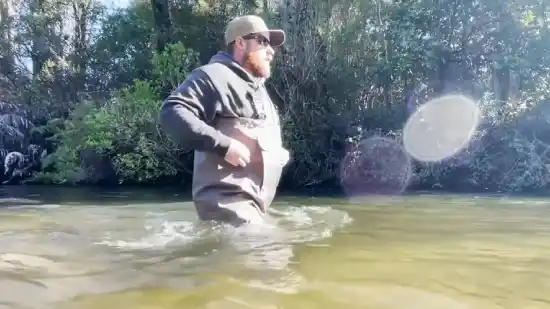
Fishing waders are ideal for specific situations such as urban rivers or areas downstream from urban environments due to hygiene concerns.
They offer excellent leg protection and keep anglers dry while fishing in waist-to-chest-deep waters. In addition, waders are perfect for rough conditions where staying dry is of the essence.
In contrast, wetsuits offer greater flexibility and versatility, making them suitable for a variety of fishing situations.
Wetsuits provide insulation and buoyancy, making them perfect for fishing in cold water temperatures, snow melt, and open ocean fishing where rocks and water are often in contact. In addition to protecting you from ocean predators, wetsuits are also great for deep-sea fishing.
Waders vs Wetsuits Comparison Table
To help you visualize the differences, here’s a table:
| Aspect | Fishing Waders | Fishing Wetsuits |
| Design and Purpose | Designed for waist-to-chest deep waters and rough conditions. Provides comfort and keeps the angler dry. | More versatile, and good for exploring deeper water and rock hopping. Designed for safety and comfort in dangerous fishing situations. |
| Material | Breathable fabrics, neoprene, vulcanized rubber, modern PVC. | Polyester, spandex, viscose, neoprene. |
| Mobility and Fit | Adjustable X-Back suspenders, quick-release buckles, multiple pockets. | Snug fit to maintain flexibility, different styles available. |
| Footwear Compatibility | Bootfoot (boots connected to wader) or Stockingfoot (requires separate footwear). | Requires separate wading boots or other suitable footwear. |
| Cleaning and Maintenance | Hand-washing or machine-washing in cold water with a normal detergent. Hang-drying inside out. Rinse with fresh water after saltwater exposure. | Rinse with fresh water after each use, avoid washing machine and normal laundry detergent. Hang dry and protect from direct sunlight. |
| Use Cases | Urban rivers or downstream areas with hygiene concerns. Fishing in waist-to-chest deep waters. | Cold water temperatures, situations requiring warmth and buoyancy, fishing in the ocean or during snow melt. |
How should you store fishing waders and wetsuits when not in use?
To properly care for your fishing waders and wetsuits when they’re not in use, storing them in a well-ventilated area away from direct sunlight or heat sources is crucial. This will help prevent any damage or deterioration caused by excessive heat or exposure to UV rays.
Ensure the waders and wetsuits are completely dry before storing them to avoid mold or mildew growth. Hanging them is the recommended storage method, as folding or creasing the material for extended periods may lead to damage. By hanging them, you can also ensure proper airflow and prevent any unwanted odors from developing.
Can fishing waders protect against sharp objects or underwater hazards?
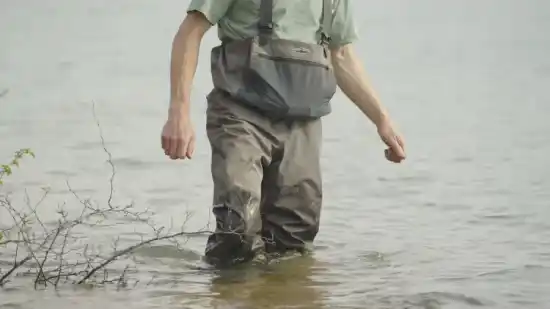
Fishing waders can provide some protection against hidden underwater hazards and sharp objects, but it’s important to exercise caution and avoid walking on dangerous surfaces.
While fishing waders are designed to be durable and resistant to punctures, they are not completely puncture-proof. They can offer a layer of protection against sharp objects like rocks or debris that may be lurking beneath the water’s surface.
However, it’s crucial to remember that fishing waders are not invincible. They are not designed to protect against larger or more serious underwater hazards. So, it’s always a good idea to be aware of your surroundings and avoid areas where there may be potential risks.
How tight should fishing waders be?
Ensure your fishing waders fit snugly but not overly tight, allowing for mobility and comfort during your fishing adventures.
It’s important to refer to the manufacturer’s sizing chart and accurately measure your height, chest, waist, and inseam. When trying on the waders, wear the same layers you typically have during fishing to ensure a proper fit with added clothing.
Test your mobility by walking, squatting, and moving around to make sure you can bend your knees and move freely.
Avoid overstretching the waders excessively, as it may lead to premature wear and tear. Check the seals around the ankles and waist to prevent water from entering.
Use adjustable features like suspenders and belts to create a secure seal. Test the water resistance by trying the waders in water to ensure no water is entering through seams or openings.
Making the Catch in Comfort: Choosing the Right Gear for Your Fishing Adventure
Both fishing waders and fishing wetsuits serve distinct purposes and are designed to cater to different fishing conditions.
Fishing waders are ideal for waist-to-chest deep waters, providing comfort and dryness while fishing wetsuits offer versatility and protection against cold water and hazards.
Store them in a ventilated area, dry and away from sunlight. Exercise caution with sharp objects.
Choose the right fit for comfort and water resistance. Ultimately, consider your fishing environment and preferences to make the best choice for a safe and enjoyable experience.

